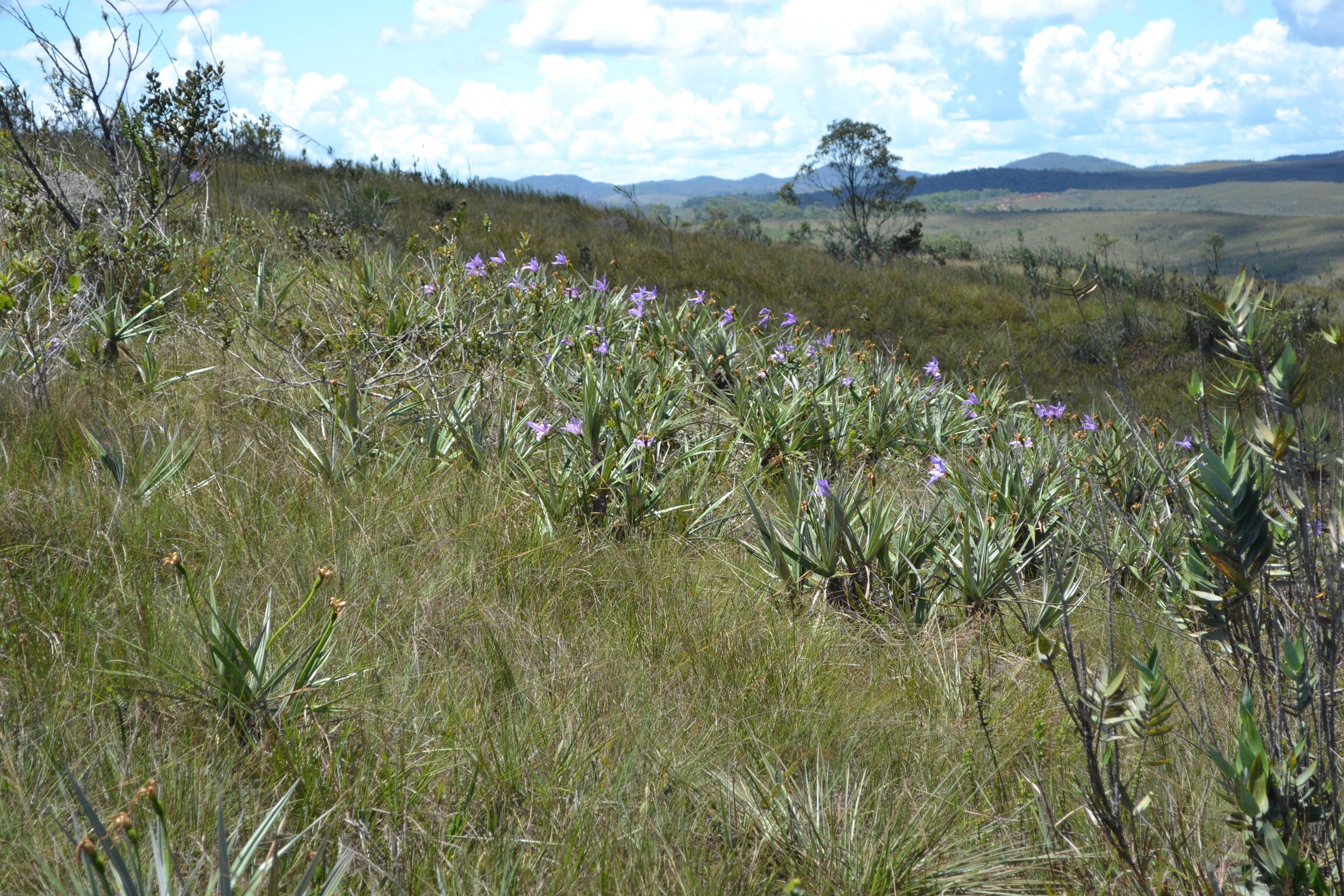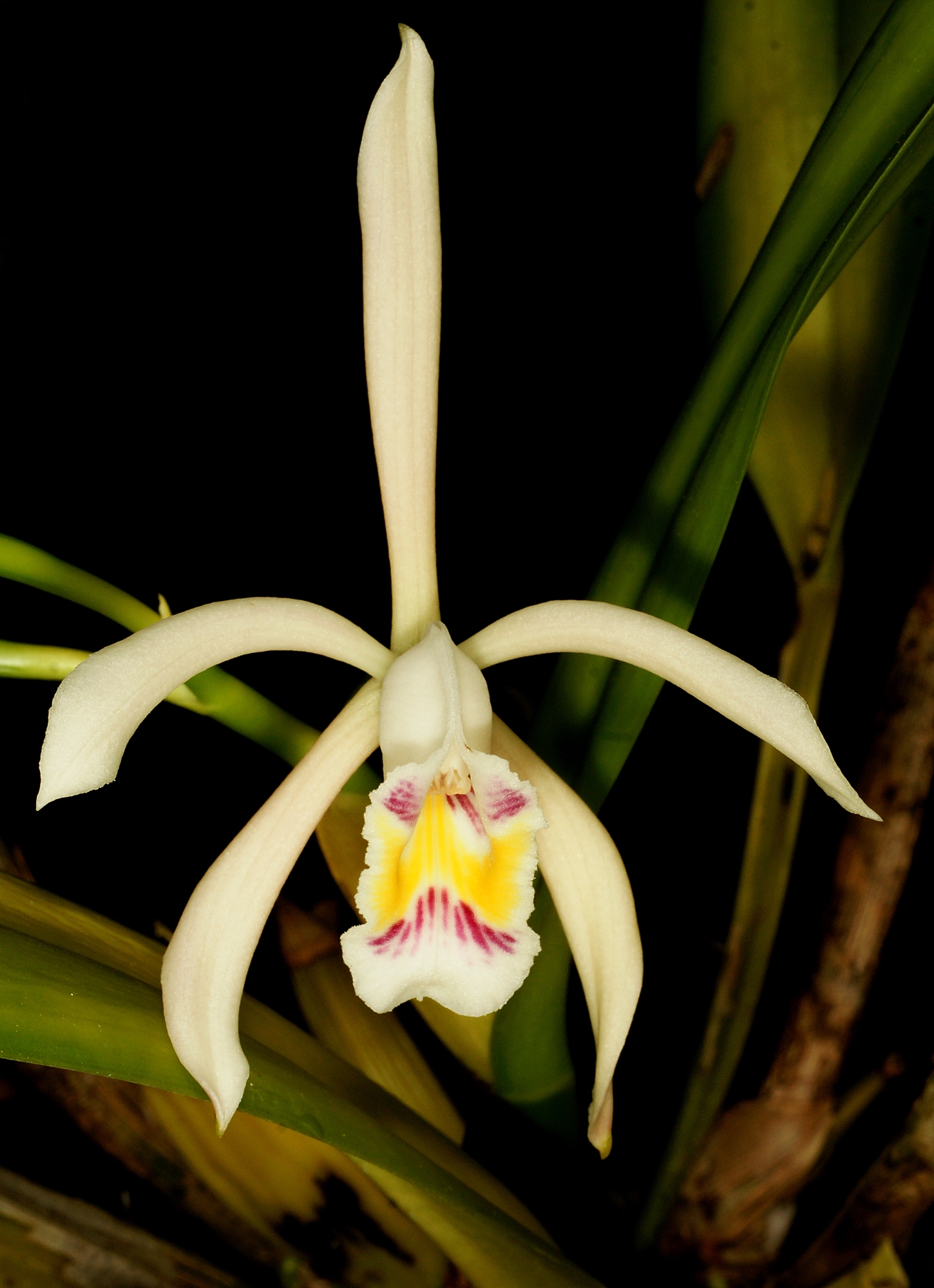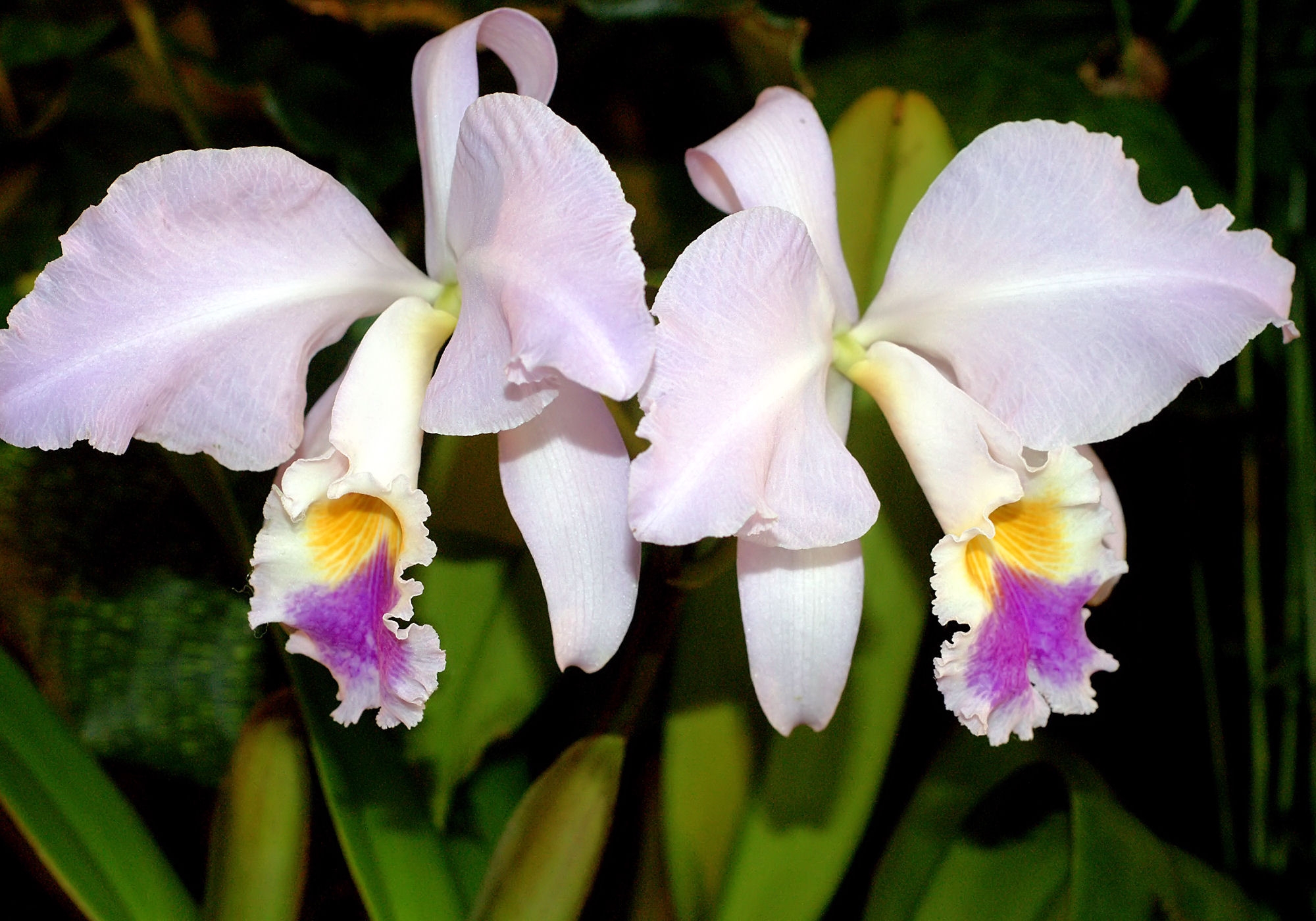|
Cattleya Elongata
''Cattleya elongata'', the "cattleya with the elongated stalk", is an orchid species in the genus ''Cattleya'' endemic to the campo rupestre The ''campo rupestre'' ("rupestrian grassland") is a discontinuous montane subtropical ecoregion occurring across three different biomes in Brazil: Cerrado, Atlantic Forest and Caatinga. Originally, ''campo rupestre'' was used to characterize t ... vegetation in northeastern Brazil. Its ploidy is 2''n'' = 80.page 250 of L. P. Felix and M. Guerra: "Variation in chromosome number and the basic number of subfamily Epidendroideae (Orchidaceae)" ''Botanical Journal of the Linnean Society'' 163(2010)234—278. The Linnean Society of London. Downloaded October 2010 from http://onlinelibrary.wiley.com/doi/10.1111/j.1095-8339.2010.01059.x/abstract ''Cattleya elongata'' forms two natural hybrids : * '' Cattleya × tenuata'' (= ''C. elongata'' × '' C. tenuis'') (Brazil) . * '' Cattleya × undulata'' ( = ''C. elongata'' × '' C. schil ... [...More Info...] [...Related Items...] OR: [Wikipedia] [Google] [Baidu] |
João Barbosa Rodrigues
João Barbosa Rodrigues (June 22, 1842 – March 6, 1909) was considered one of Brazil's greatest botanists, known especially for his work on orchids and palms. For nearly two decades he was director of the Botanic Garden of Rio de Janeiro. Something of a polymath, he was a prolific botanical artist who also made contributions to his country's ethnography, geography, linguistics, zoology, and literature. Early life and education Rodrigues was born on June 22, 1842, in São Gonçalo do Sapucaí, Brazil, and was initially raised in Campanha, in the state of Minas Gerais, before the family returned to Rio in 1858. His father was a Portuguese merchant, and his mother was a Brazilian of Indian descent. He had several siblings: brothers João Baptista and Arthur and sisters Maria and Olympia. He showed early ability as a writer and he was always interested in natural science, particularly in collecting insects and plants. However, he went to the Central School of Engineering in Rio de ... [...More Info...] [...Related Items...] OR: [Wikipedia] [Google] [Baidu] |
Cattleya
''Cattleya'' () is a genus of orchids from Costa Rica south to Argentina. The genus is abbreviated C in trade journals. Description Epiphytic or terrestrial orchids with cylindrical rhizome from which the fleshy noodle-like roots grow. Pseudobulbs can be conical, spindle-shaped or cylindrical; with upright growth; one or two leaves growing from the top of them. The leaves can be oblong, lanceolate or elliptical, somewhat fleshy, with smooth margin. The inflorescence is a terminal raceme with few or several flowers. Flowers have sepals and petals free from each other; the lip or labellum (lowermost petal), usually has a different coloration and shape from the rest of the flower and covers in part the flower column forming a tube. There are four polliniums (bag-like organs that contain pollen). The fruit is a capsule with many small seeds.Schweinfurth, C., "Orchidaceae, Orchids of Peru", ''Fieldiana, Botany'' 30(3): 535 Taxonomy The genus was named in 1824 by John Lindley af ... [...More Info...] [...Related Items...] OR: [Wikipedia] [Google] [Baidu] |
Campo Rupestre
The ''campo rupestre'' ("rupestrian grassland") is a discontinuous montane subtropical ecoregion occurring across three different biomes in Brazil: Cerrado, Atlantic Forest and Caatinga. Originally, ''campo rupestre'' was used to characterize the montane vegetation of the Espinhaço Range, but recently this term has been broadly applied by the scientific community to define high altitudinal fire-prone areas dominated by grasslands and rocky outcrops. Geography ''Campo rupestre'' (sensu lato) occupies less than one percent of the Brazilian territory, 66,447km2, and it is concentrated mostly in the states of Minas Gerais, Bahia and Goiás. This ecoregion consists of a series of relatively small and isolated grasslands and rocky outcrops mostly distributed in the Espinhaço Range in eastern Brazil, surrounded by lowland and montane forests. It also forms discontinuous enclaves in other mountain ranges, such as Carajás Mountains, Serra da Canastra, Serra do Caparaó, Chapada D ... [...More Info...] [...Related Items...] OR: [Wikipedia] [Google] [Baidu] |
Cattleya × Tenuata
''Cattleya'' () is a genus of orchids from Costa Rica south to Argentina. The genus is abbreviated C in trade journals. Description Epiphytic or terrestrial orchids with cylindrical rhizome from which the fleshy noodle-like roots grow. Pseudobulbs can be conical, spindle-shaped or cylindrical; with upright growth; one or two leaves growing from the top of them. The leaves can be oblong, lanceolate or elliptical, somewhat fleshy, with smooth margin. The inflorescence is a terminal raceme with few or several flowers. Flowers have sepals and petals free from each other; the lip or labellum (lowermost petal), usually has a different coloration and shape from the rest of the flower and covers in part the flower column forming a tube. There are four polliniums (bag-like organs that contain pollen). The fruit is a capsule with many small seeds.Schweinfurth, C., "Orchidaceae, Orchids of Peru", ''Fieldiana, Botany'' 30(3): 535 Taxonomy The genus was named in 1824 by John Lindley af ... [...More Info...] [...Related Items...] OR: [Wikipedia] [Google] [Baidu] |
Cattleya Tenuis
''Cattleya tenuis'' (the "slender-stemmed cattleya") is a species of orchid. It shares the rarely used common name In biology, a common name of a taxon or organism (also known as a vernacular name, English name, colloquial name, country name, popular name, or farmer's name) is a name that is based on the normal language of everyday life; and is often contrast ... of Easter orchid with '' C. mossiae'' and '' C. schroederae''. Natural hybrids : * '' Cattleya × tenuata'' (= '' C. elongata'' × ''C. tenuis'') (Brazil) References External links * * tenuis tenuis {{Laeliinae-stub ... [...More Info...] [...Related Items...] OR: [Wikipedia] [Google] [Baidu] |
Cattleya × Undulata
''Cattleya'' () is a genus of orchids from Costa Rica south to Argentina. The genus is abbreviated C in trade journals. Description Epiphytic or terrestrial orchids with cylindrical rhizome from which the fleshy noodle-like roots grow. Pseudobulbs can be conical, spindle-shaped or cylindrical; with upright growth; one or two leaves growing from the top of them. The leaves can be oblong, lanceolate or elliptical, somewhat fleshy, with smooth margin. The inflorescence is a terminal raceme with few or several flowers. Flowers have sepals and petals free from each other; the lip or labellum (lowermost petal), usually has a different coloration and shape from the rest of the flower and covers in part the flower column forming a tube. There are four polliniums (bag-like organs that contain pollen). The fruit is a capsule with many small seeds.Schweinfurth, C., "Orchidaceae, Orchids of Peru", ''Fieldiana, Botany'' 30(3): 535 Taxonomy The genus was named in 1824 by John Lindley a ... [...More Info...] [...Related Items...] OR: [Wikipedia] [Google] [Baidu] |
Cattleya Schilleriana
''Cattleya schilleriana'' is a species of bifoliate '' Cattleya'' orchid. It is endemic to Bahia state in coastal eastern Brazil Brazil ( pt, Brasil; ), officially the Federative Republic of Brazil (Portuguese: ), is the largest country in both South America and Latin America. At and with over 217 million people, Brazil is the world's fifth-largest country by area ....Wildorchidbrazil.com: "12 Endangered Wild Orchid (plant species) of Brazil" — ''with Cattleya schilleriana info +image''. Today it is considered extinct in nature. ;Natural hybrids : * ''Cattleya'' × ''undulata'' ( = '' C. elongata'' × ''C. schilleriana'' ... [...More Info...] [...Related Items...] OR: [Wikipedia] [Google] [Baidu] |
Plants Described In 1877
Plants are predominantly photosynthetic eukaryotes of the kingdom Plantae. Historically, the plant kingdom encompassed all living things that were not animals, and included algae and fungi; however, all current definitions of Plantae exclude the fungi and some algae, as well as the prokaryotes (the archaea and bacteria). By one definition, plants form the clade Viridiplantae (Latin name for "green plants") which is sister of the Glaucophyta, and consists of the green algae and Embryophyta (land plants). The latter includes the flowering plants, conifers and other gymnosperms, ferns and their allies, hornworts, liverworts, and mosses. Most plants are multicellular organisms. Green plants obtain most of their energy from sunlight via photosynthesis by primary chloroplasts that are derived from endosymbiosis with cyanobacteria. Their chloroplasts contain chlorophylls a and b, which gives them their green color. Some plants are parasitic or mycotrophic and have lost the abilit ... [...More Info...] [...Related Items...] OR: [Wikipedia] [Google] [Baidu] |




